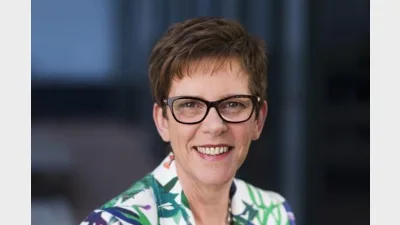Super funds rise for sixth straight month



Australian super funds have extended their winning streak into September, as strong global equities and resilient long-term returns boost member outcomes.
Super funds have performed strongly for the sixth consecutive month in September, with the median growth fund holding between 61 and 80 per cent in growth assets, returning 0.8 per cent over the month, according to the latest data from Chant West.
With share markets rising through October and less than three months left in the calendar year, the median growth fund return has reached about 9 per cent. Higher growth risk categories have performed even better.
Chant West head of superannuation investment research Mano Mohankumar commented that international shares have been the main driver of the September result.
“Developed international shares returned 3.3 per cent and 2 per cent in hedged and unhedged terms, respectively, with that strong performance led by the US and tech sector which benefitted from renewed enthusiasm around AI,” he said.
“The resumption of interest rate cuts by the Federal Reserve during the month and solid corporate earnings also buoyed share markets.
“Emerging markets shares outperformed developed markets, surging 5.8 per cent on an unhedged basis over the month, representing their strongest return in more than two years.”
By contrast, Australian shares have underperformed with a small loss of 0.6 per cent, as expectations for domestic rate cuts have been scaled back in response to firmer economic data and moderately stickier inflation.
Over the same period, Australian and international bonds have gained 0.1 per cent and 0.7 per cent, respectively.
Across all traditional diversified risk categories tracked by Chant West’s Super Fund Performance Survey, returns to the end of September have remained robust.
All growth options have returned 1.2 per cent for the month and 10.4 per cent year-to-date, while high growth and growth funds have returned 0.9 per cent and 0.8 per cent, respectively.
Meanwhile, conservative funds have returned 0.5 per cent for the month and 5.3 per cent year-to-date.
Chant West noted that all risk categories have generally met their long-term return objectives, ranging from CPI plus 1.5 per cent for conservative funds to CPI plus 4.25 per cent for all growth.
Mohankumar further stated that it is crucial to remember that super is a long-term investment.
“Since the introduction of compulsory super in July 1992, the median growth fund has returned 8 per cent per annum,” he said. “The annual CPI increase over the same period is 2.7 per cent, giving a real return of 5.3 per cent per annum – well above the typical 3.5 per cent target.”
“Even looking at the past 20 years, which includes three major share market downturns – the GFC, COVID-19, and the high inflation and rising interest rate period in 2022 – super funds have returned 7 per cent per annum, which is still comfortably ahead of the typical objective.”
According to Chant West, the median growth fund has exceeded its return objective over most rolling 10-year periods, except during the years following the global financial crisis, when the sharp 16-month downturn caused an average loss of about 26 per cent.
Recommended for you
The super fund has appointed long-serving technology leader Richard Exton to its executive team, underscoring the fund’s digital transformation priorities.
Valuations of the major US tech companies are becoming elevated, according to UniSuper’s chief investment officer John Pearce, but not yet at bubble territory.
The country’s largest super fund has launched a £500 million UK housing platform to expand its living sector investments and support economic growth.
Australian Retirement Trust (ART) has announced Helen Rowell has been appointed as the fund’s new chair, set to succeed Andrew Fraser.









